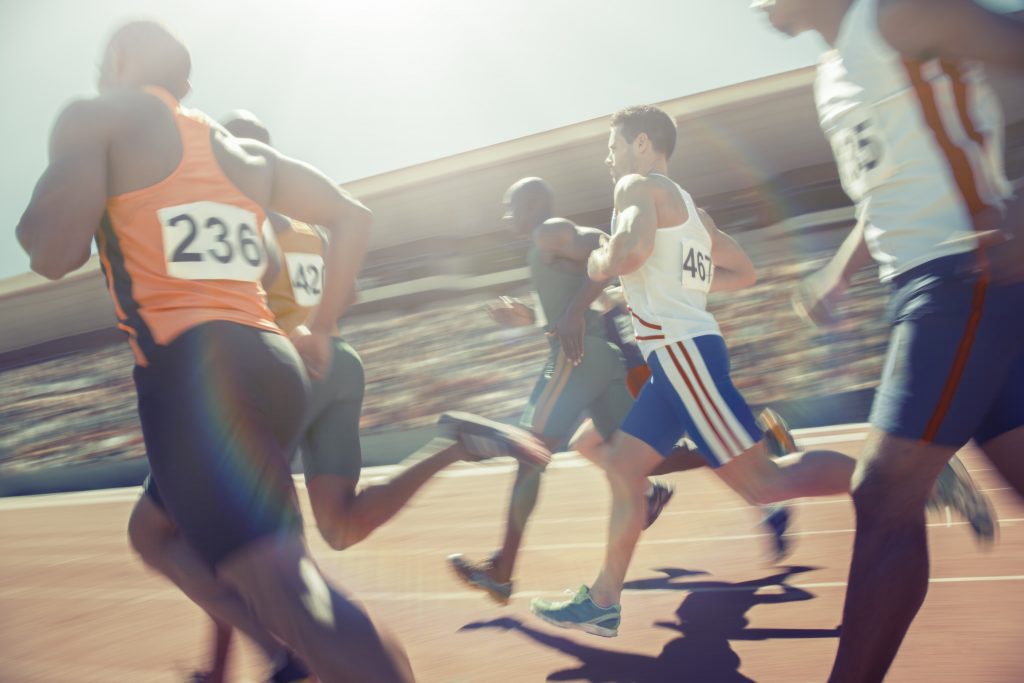Sodium supplementation beliefs
Many ultramarathon runners believe the consumption of sodium supplements during competition will prevent the symptoms of exercise-associated hyponatremia, including dehydration, muscle cramping, and nausea. However, accumulating evidence suggests supplementing sodium intake above what is consumed in food and drink is generally not necessary, and could be dangerous.
Pre-exercise hydration
While hydration practices during training and competition are important, new research emphasizes the importance of beginning endurance exercise in a well-hydrated state. Athletes experiencing pre-exercise dehydration showed impaired aerobic exercise performance, peak oxygen consumption, and lactate threshold.
Protective effects of nutrition
In American football, measurements revealed youth and college-level athletes experienced anywhere from 100-1,000 head impacts during the season. That trauma can add up, risking long-term impacts on brain health, including cognitive, emotional and behaviour difficulties and dysfunction. Consider the role of nutrition in protecting against repetitive sub-concussive injury.
Relative Energy Deficiency in Sport: What Coaches Need to Know

Mary Cain, a former record-breaking phenom, made a different type of headline when she spoke up about the pressure she faced to lose weight that caused her to disappear from the running scene (Cain, 2019). Cain’s willingness to speak up started a social media movement that brought to the public’s attention the cost of under-fuelling…
Winter 2021 SIRCuit
The Winter 2021 SIRCuit is now available! For many, the new year presents an opportunity to set new goals, refine behaviours, or let go of something that is holding them back. This edition of the SIRCuit provides takes a deep dive into self-compassion, athlete identification, relative energy deficiency in sport (RED-S), engaging masters athletes, and social learning…
Risk of Stress Fractures
Stress fractures are observed more frequently in female runners, compared to males. Analysis of women’s perception of risk and behaviors discovered those with a history of fractures increased their training load more quickly, and, despite knowing the benefits, they did not prioritize a balanced diet and complementary cross-training.
Post-Game Snacks
A new study by public health researchers finds the number of calories kids consume from post-game snacks far exceeds the number of calories they actually burn playing in the game. The researchers found the average energy expenditure for children observed was 170 calories per game, while the average caloric intake from post-game snacks was 213…
Cooling Strategies to Improve Performance in the Heat

Whether you are a high performance athlete training for the Olympic and Paralympic Summer Games in Tokyo, or a weekend warrior working on a personal best, learning to manage heat stress should be a priority. Heat stress and fatigue can lead to decreases in performance, influencing a podium finish, or can be the precursor to…
Nutrition & Injury
Did you know eating more fish could help protect you from brain injury? The SIRCuit explores the promise of omega-3 fatty acids, creatine, vitamin D, curcumin, high quality fats and carbohydrates, and good hydration in protecting athletes from sub-concussive injury.
Hunger & HIIT Workouts
Wonder why you’re not hungry after HIIT workouts? New research from Wilfred Laurier University reports that lactate produced during hard interval workouts influences appetite-associated hormones, causing post-exercise appetite suppression.